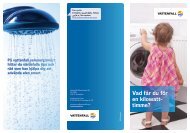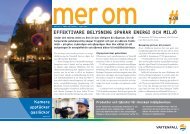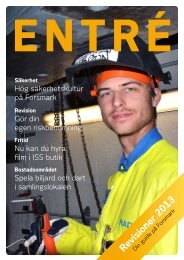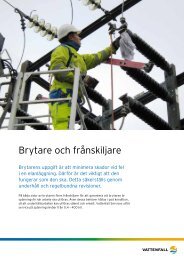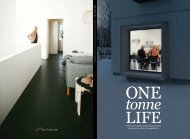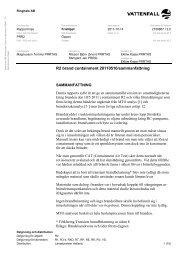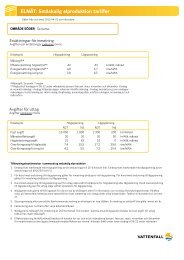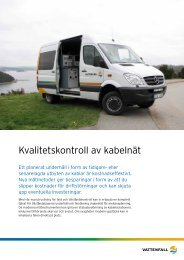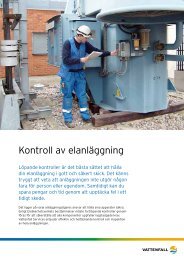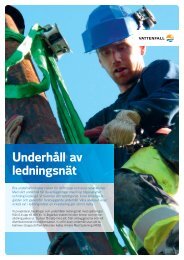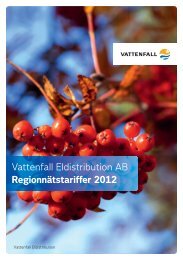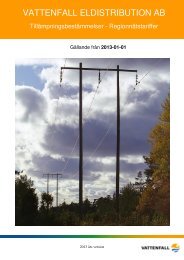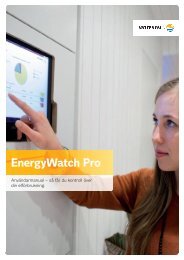This environmental impact assessment for Kriegers flak ... - Vattenfall
This environmental impact assessment for Kriegers flak ... - Vattenfall
This environmental impact assessment for Kriegers flak ... - Vattenfall
Create successful ePaper yourself
Turn your PDF publications into a flip-book with our unique Google optimized e-Paper software.
156 CONTROL PROGRAM<br />
14. Control program<br />
Comprehensive control programs will be conducted to be able to determine the possible<br />
<strong>impact</strong> on plants and benthic fauna (epifauna, infauna and macrophytes) fi sh, birds, hydro<br />
graphics (saltwater mixing) and shipping. The suggestions <strong>for</strong> control programs that have<br />
been made to date are not fi nalised yet as comments and viewpoints will be taken into con-<br />
sideration.<br />
14.1 Flora and benthic fauna<br />
The University of Lund has developed a suggested control<br />
program <strong>for</strong> epifauna, infauna and macrophytes.<br />
The proposal is mainly based on preliminary investigations<br />
with analysis of the protection value made by<br />
IfAÖ. It is found that a small or medium protection<br />
value is the basis <strong>for</strong> the criteria “rare or endangered<br />
species”, “Regional/cross-regional importance” and,<br />
in terms of the macrophytes ß ora, “multiplicity and<br />
individuality”. A high protection value is only applicable<br />
in terms of macrozoobentos “multiplicity and<br />
individuality”.<br />
Based on the preliminary Þ ndings, the proposed<br />
control program is divided into different depth areas<br />
that focus on slightly varying organisms. It is then<br />
further divided into time-based sub-programs that are<br />
suggested to include: preliminary investigations and<br />
the establishment of stations, investigations connected<br />
to the construction phase, and investigations during<br />
the operational phase. For the dismantling phase, it is<br />
suggested that a control program is established later,<br />
when the method of dismantling and the results from<br />
the operational phase are known.<br />
A number of measuring stations where biological<br />
testing and video documentation is carried out, are<br />
placed at various depths. The video documentation<br />
should be conducted so that different measuring occasions<br />
may be compared.<br />
Stations at a depth between 28-38 meters will partly<br />
investigate the biomass and specimen density of the<br />
sea mussel, and partly the infauna in terms of species<br />
structure and specimen density. Stations at a water<br />
depth of more than 40 meters will study the infauna in<br />
terms of species structure and specimen density. During<br />
the development phase, the inß uence of possible<br />
sedimentation is studied and during the operational<br />
phase, new stations are established to study the establishment<br />
of organisms on the foundations. Vegetation<br />
and possible spread of drifting algae is studied using<br />
the video documentation.<br />
For the entire control program proposal <strong>for</strong> epifauna,<br />
infauna and macrophytes, please see Attachment 6.2.




